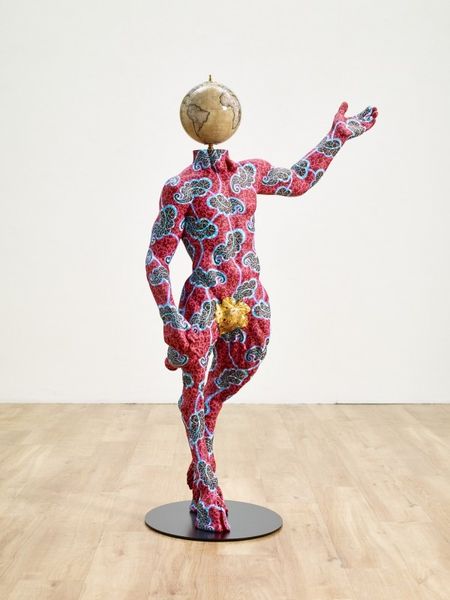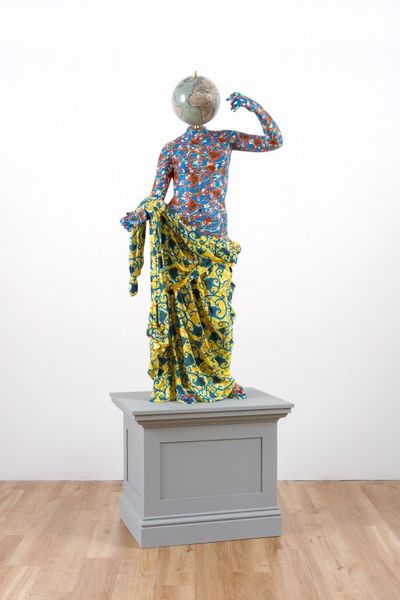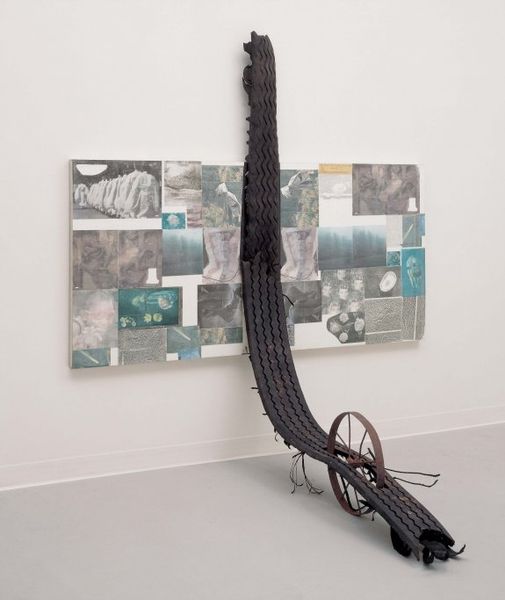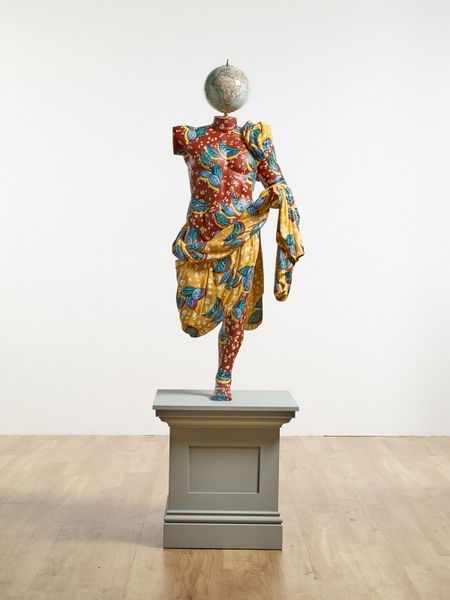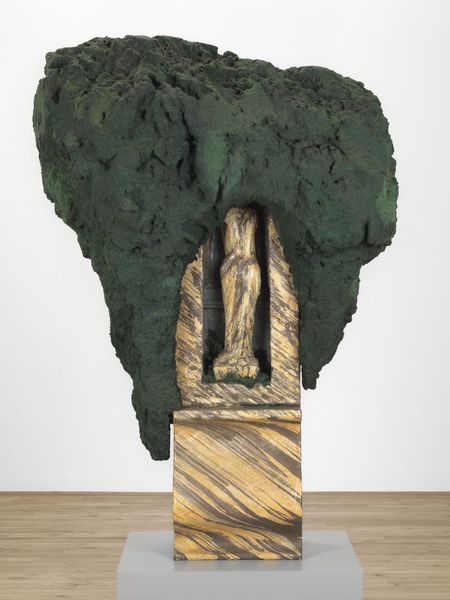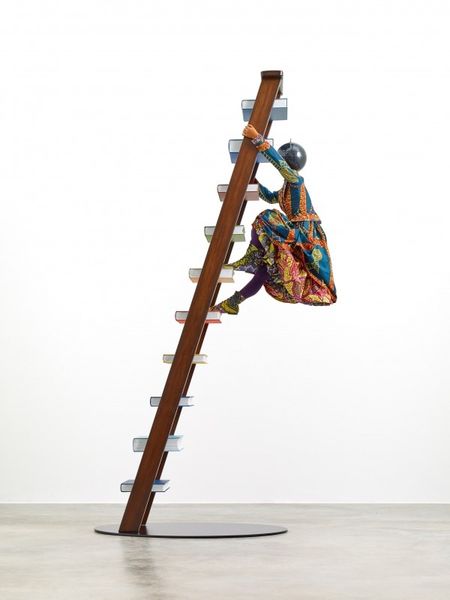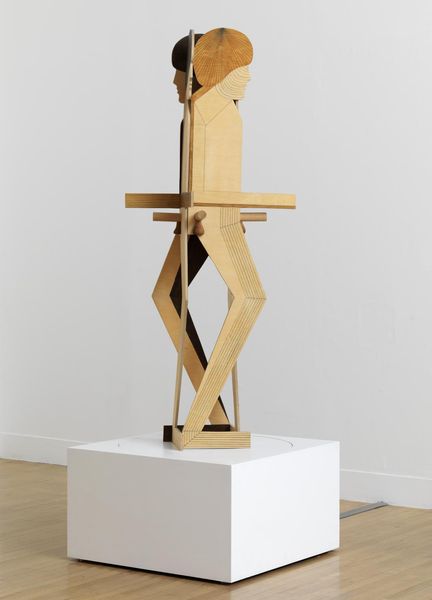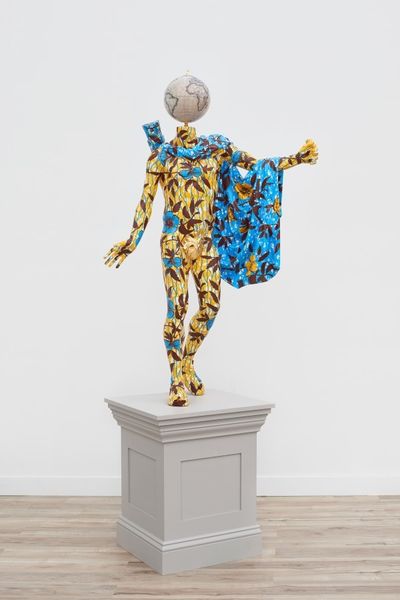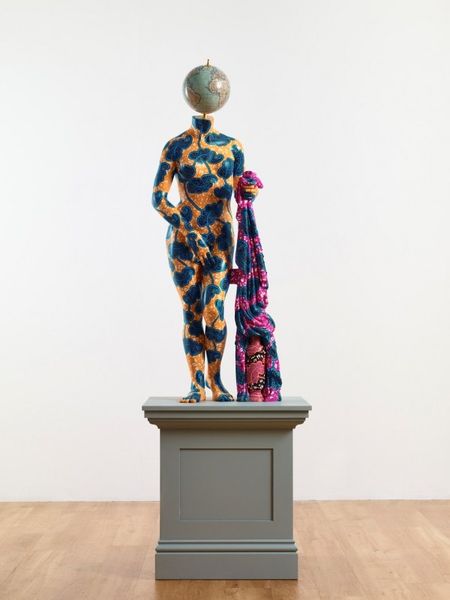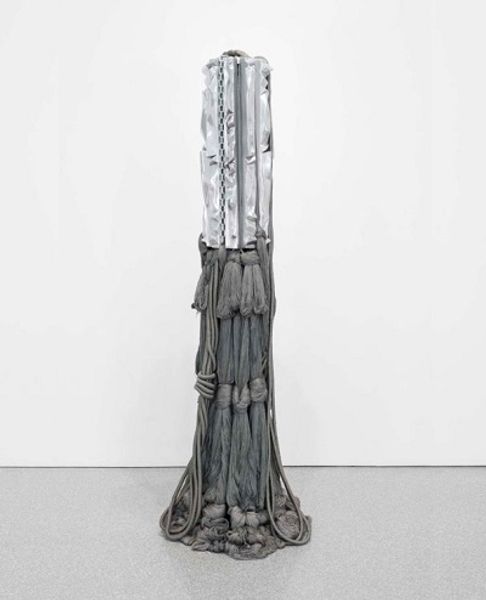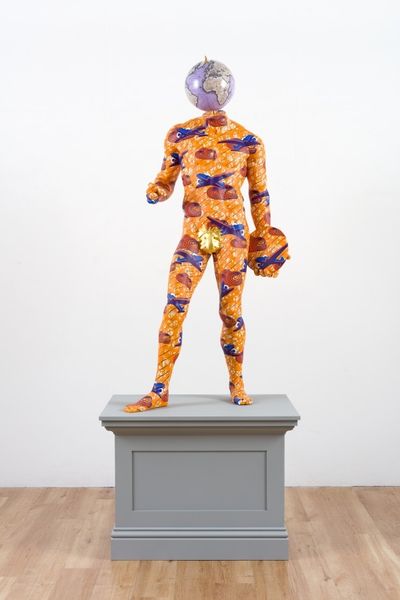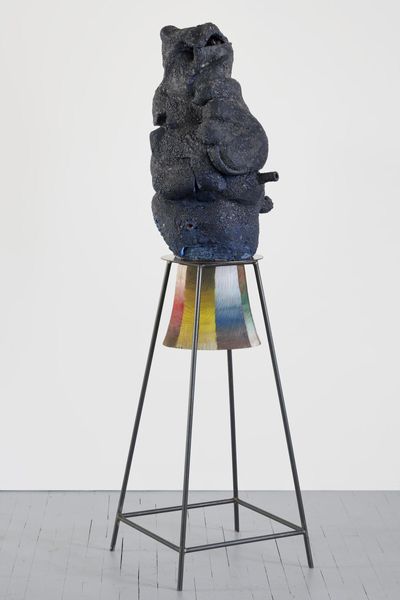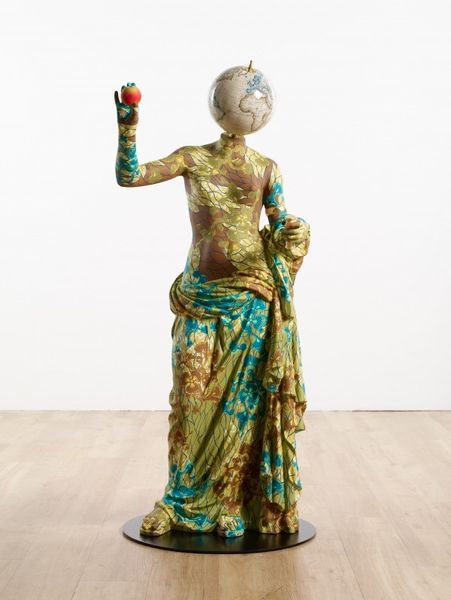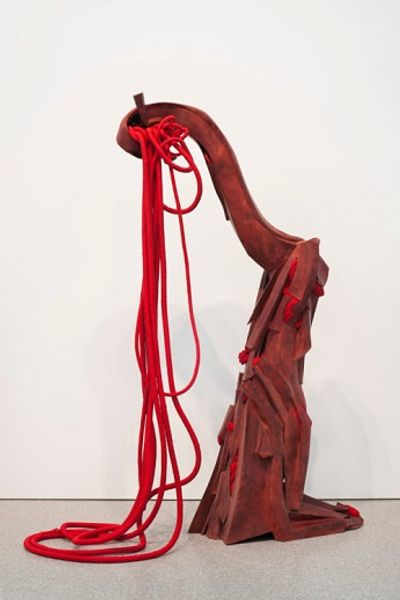
Dimensions: object: 2870 x 1525 x 580 mm
Copyright: © Kate Blacker | CC-BY-NC-ND 4.0 DEED, Photo: Tate
Editor: This is Kate Blacker's 'Made in '84' sculpture. The painted, cut-out figure and landscape jut from the wall, almost like a stage set. What's striking to me is the overt artificiality of the materials. What do you see in the way Blacker uses materials here? Curator: The work speaks volumes about the artifice of representation, doesn't it? Note the corrugated plastic and the roughly hewn edges. Blacker seems to be interrogating the means of production itself, exposing the labor and materials that go into creating an image. The "crafty" aesthetic challenges traditional hierarchies. Editor: So, it's less about *what* is depicted and more about *how* it's made and what that signifies? Curator: Precisely. Consider, too, the societal context. What might the mass-produced nature of these materials suggest about consumer culture in the 1980s? Editor: That's a great point. I hadn't considered that connection to consumerism. Curator: Seeing the piece through a materialist lens definitely opens up a whole new layer of understanding. Editor: I'll definitely remember to consider materiality more carefully going forward.
Comments
Join the conversation
Join millions of artists and users on Artera today and experience the ultimate creative platform.
tate 7 months ago
⋮
Blacker's sculptures of the early 1980s were often made using discarded materials, such as corrugated iron sheeting. She painted figures on them, using the contours and folds of the sheets as she found them. Some, like 'Made in '84' are more complex and are made of several separate parts joined together. The final figures are witty and inventive and mark an overlap between the activities of painting and sculpture. In this work, the surface of the corrugated sheet is covered in images of electronic components. These partly conceal the standing figure 'wrapped' in the crumpled metal. Gallery label, September 2004
